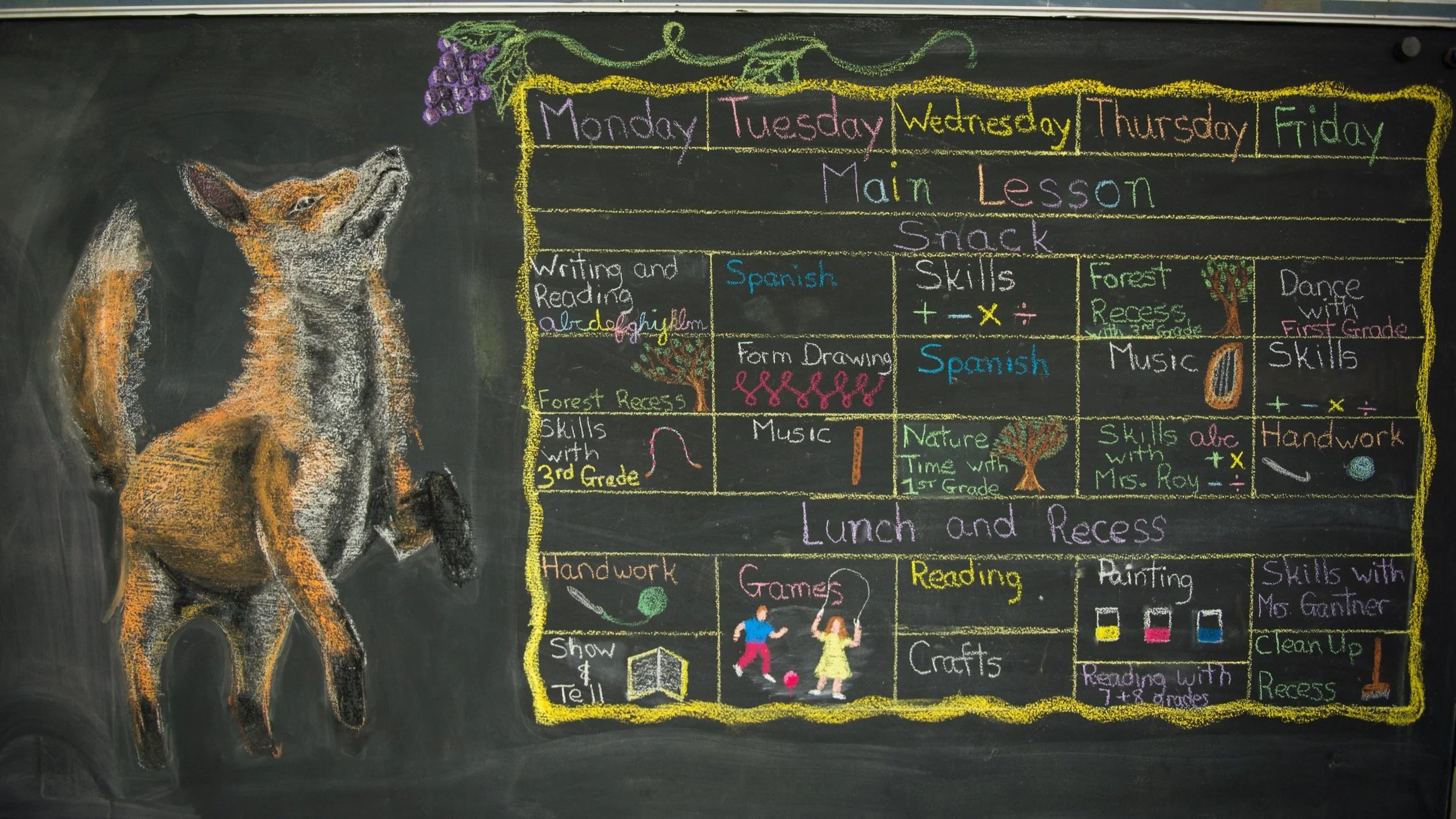
WSD Curriculum
Our curriculum moves in alignment with child development, awakening students to the experience of knowledge, strengthening their sense of moral responsibility, and empowering them to act with courage and conviction.
Care Group
This dynamic method supports a wide range of learning styles and fosters deep, lasting understanding. Rather than relying solely on textbooks or lectures, our students might be building, painting, hiking, or singing as they explore complex concepts—making learning meaningful, memorable, and joyful.
Our innovative, whole-child approach goes far beyond traditional academics—engaging not just the intellect, but the heart and hands as well. At the Waldorf School of DuPage, every subject comes to life through practical arts, music, movement, and storytelling, creating an immersive learning experience where all students can thrive.
While our approach accommodates many types of learners, we recognize that we are not equipped to meet the needs of every child. Due to current resource limitations, we do not have a full, dedicated special education team. However, additional support is available through our Care Group, which provides assistance within the scope of our capabilities.
Early Childhood
I am the world.
In early childhood, our focus is on nurturing wonder, imagination, and exploration—not formal academic work, which begins in the grades. Through storytelling, music, creative play, and nature experiences, children develop motor skills, language, and social abilities. A consistent daily rhythm fosters security and trust, while teachers offer gentle guidance in a supportive environment. Assessment is formative, based on careful observation of each child’s play and interactions. Parent-teacher conferences provide opportunities for reflection and shared insight into each child’s development.
Curriculum Examples
Baking Bread Together: While it may seem simple, this activity supports fine motor skills, sequencing, and patience, all while offering rich opportunities for sensory exploration.
Puppet Play and Story Reenactment: This imaginative reenactment helps children develop language, memory, empathy, and social skills as they negotiate roles and retell key story elements.
Outdoor Exploration: Children explore the natural world with wonder—collecting leaves, watching birds, or tracking animals in the snow—fostering gross motor skills, curiosity, and a deep connection to nature.
Lower Grades
I love the world.
In Grades 1–5, the curriculum broadens to include specific focus in language arts, math, natural sciences, history, fine and practical art, music, world languages, and more. In Waldorf education, these classes are not considered electives but essential components of a balanced, developmentally appropriate curriculum. These subjects support the growth of the whole child—intellectually, emotionally, physically, and socially—by engaging different capacities and nurturing creativity, coordination, empathy, and cultural understanding. These experiences are woven into the fabric of Waldorf education to cultivate well-rounded individuals with a strong sense of self and a deep, lifelong love of learning.
Lessons are lively and multidisciplinary, incorporating storytelling, hands-on activities, and experiential learning to support diverse learning styles.
Assessment emphasizes a comprehensive understanding of each student’s progress through observation, written work, projects, and presentations, complemented by conferences and opportunities for self-reflection.
Curriculum Examples
Handwork: Far more than a craft—it’s a vital part of the curriculum that nurtures capable, confident, and creative individuals, laying the foundation for academic success, emotional well-being, and lifelong practical competence.
Form Drawing: Form drawing lays the groundwork for later geometric thinking by giving children a felt sense of shape, structure, and spatial relationships.
Dance: Dance is a core, experience-focused subject that integrates movement with music, language, and learning—nurturing body, soul, and spirit while supporting physical development, emotional expression, academic growth, and inner confidence.
Upper grades
I know the world.
In Grades 6–8, our curriculum deepens both academically and socially, inspiring students to engage with greater complexity while growing in confidence and capability. Through rich, integrated lessons and meaningful assessments—including observation, projects, and presentations—we focus on each student’s individual growth and strengths. By the end of middle school, our students are not only academically prepared for high school, but they transition with confidence—most performing at or above grade level and ready to thrive in their next chapter.
Curriculum Examples
Physics- students observe and describe real phenomena, allowing them to develop their own understanding before formal concepts are introduced. The curriculum typically begins in sixth grade with acoustics, optics, and thermodynamics—exploring sound, light, and heat through direct experiments and observation. In seventh grade, the focus shifts to mechanics and the laws of motion, often tied to students’ growing sense of independence and curiosity about how things work. Eighth grade introduces topics like magnetism, electricity, and aerodynamics, laying the foundation for more formal high school science.
Global Contrasts: This helps students develop empathy and global awareness by exploring and comparing the diverse cultures, environments, and ways of life around the world.
Veil Painting: This method is a gentle watercolor technique that nurtures children’s creativity, fine motor skills, and emotional expression through soft, layered washes of color.
Subject Classes
All students participate fully in every subject, including a vibrant program in music, handwork, languages, and movement—nothing is optional.
-

Music and Orchestra
Engaging in music from PreK through 8th grade activates the whole brain—enhancing memory, spatial reasoning, language development, and emotional intelligence—while fostering a deep sense of rhythm, focus, and joy in learning.
-

Games Class
Games/Movement supports physical growth, social skills, and inner balance through imaginative, age-appropriate activities that evolve from playful movement to skillful teamwork.
-

Handwork
Through years of progressively challenging projects, Waldorf handwork classes develop fine motor skills, creativity, perseverance, and practical craftsmanship—equipping students with lifelong confidence in their ability to create with their own hands.
-

Spanish
Studying Spanish from PreK through 8th grade nurtures cultural awareness, cognitive flexibility, and communication skills, giving students a strong foundation in both language and global understanding during their most formative years.
-

American Sign Language (ASL)
Studying American Sign Language throughout elementary and middle school strengthens visual-spatial awareness, empathy, and communication skills, while opening doors to a more inclusive and accessible world.





